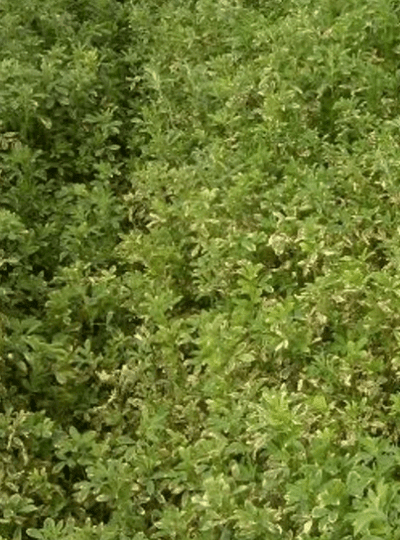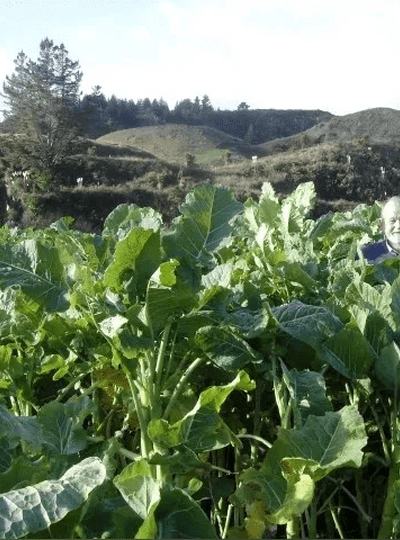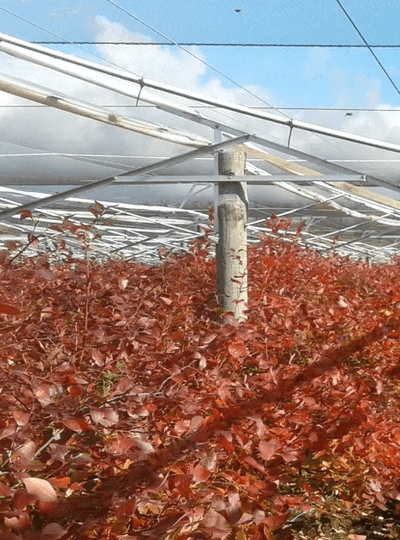Potassium In Animal Nutrition
Potassium has been recognised as an essential nutrient in animal nutrition since its importance was pointed out by Sidney Ringer in 1883. Potassium is essential for life. Young animals will fail to grow and will die within a few days when the diet is extremely deficient in K.Potassium is the third most abundant mineral element in the animal body, surpassed only by calcium (Ca) and phosphorus (P). Potassium concentrations in cells exceed the concentration of sodium (Na) by 20 to 30 times.
Outside the cell the reverse is true. Potassium comprises about 5 percent of the total mineral content of the body. Muscle contains most of the total K in the bodies of animals (Table 1).Potassium is contained almost entirely within the cells and is the most plentiful ion of the intracellular fluids. Potassium is found in every cell. It is present in tissues and cells only in ionic form (K+).
Functions Of Potassium
Potassium functions in the intracellular fluids the same as Na does in the extracellular fluids. The major functions of K in the human and animal body are to:
maintain water balance
maintain osmotic pressure
maintain acid-base balance
activate enzymes
help metabolize carbohydrates and proteins
regulate neuromuscular activity (along with Ca)
help regulate heartbeat.
Potassium Deficiency
There are several causes of K deficiency: inadequate amounts of K in diet, K losses in digestive secretions caused by vomiting and diarrhea, high intake of Na, increased urination, and stress conditions. Potassium deficiency may commonly be manifested by depressed growth, muscular weakness, stiffness, decreased feed intake, intracellular acidosis, nervous disorders, reduced heart rate, and abnormal electrocardiograms.
The first sign of K deficiencyis reduced feed intake. Many of the other signs stem from reduced feed intake. Potassium must be supplied in the daily ration because it is a mobile nutrient and there are not any appreciable reserves.
Potassium Uptake And Control
Potassium is absorbed in the small intestine. Its availability in digestion is nearly 100 percent. Most K is lost or excreted in urine.
Potassium (K) is essential for human and animal life. Potassium is involved in many body functions and is required for proper muscle development. Adequate K is also important for good heart function. The recommended daily allowance (RDA) of K varies depending on species, stage of growth, and level of other dietary minerals.
There is a small amount lost in perspiration. Kidneys play the most important role in maintenance and control of K. Under stress conditions the kidneys tend to excrete more K and conserve more Na.
Potassium In Human Nutrition
The usual American diet normally contains adequate K. The RDA is 2,500 milligrams (mg). The usual intake is 2,000 to 4,000 mg per day. Problems with K intake can occur. Diets low in carbohydrates lower blood K and can cause an irregular heartbeat. Potassium deficiency can become serious due to K depletion in cases of cirrhosis of the liver, diarrhea, vomiting, diabetic acidosis, body burns, and severe protein-calorie malnutrition.
Potassium plays important functions in good cardiac health. Blood pressure is influenced by K. It helps overcome the adverse effect of Na on blood pressure. Sodium can be balanced with K to maintain normal blood pressure.
Potassium In Animal Nutrition
Potassium is especially important in diets of chickens and turkeys during the first 8 weeks. During heat stress, or if there is any diarrhoea, the needed levels may be higher. Adequate K in the ration of laying hens assures good egg production, egg weight, and shell thickness. In starter chicks and turkey poults, adequate K increases weight gain, improves feed efficiency, and reduces mortality.
Swine K requirement is higher for young pigs than for older ones. It ranges from about 0.33 percent (dry matter basis) in rations of small pigs weighing up to 8 lb, to 0.19 percent in rations of pigs weighing more than 180 lb.
Ruminants have a higher K requirement than non-ruminants. Potassium is essential for rumen microorganisms. The single most consistent effect of suboptimal K in the ration of ruminants is decreased feed intake.
Lactating dairy cattle, particularly high producing cows, require the highest levels of dietary K. Under heat stress, their optimal level of dietary K can be as high as 1.9 percent, but the normal National Research Council (NRC) recommendation is 1.0 percent of dietary dry matter. Less K (0.65 percent) is recommended for dry cows, calves and heifers. During the last three to four weeks before calving, excessive K in the dry cow diet can increase the incidence of milk fever and retained placentas.
This can lead to reduced milk production during the subsequent lactation. The maximum amount of K desirable in the dry cow diet depends on the use of anionic salts and other factors, but generally forage K shouldbe less than 2.5 percent. Cool-season forages tend to contain more K than warm-season grasses. Thus, problems of excess occurless frequently in southern than in northern regions.
The RDA of beef cattle is about 0.5 to 0.7 percent of dry ration. Several studies have been reported with weight gains of steers on rations containing optimum levels of K. In Texas and Tennessee, elevating K levels to 1.4 percent of dietary dry matter helped reduce the stress of shipping calves and lambs to feedlots. Grass tetany and wheat pasture poisoning are metabolic diseases of lactating cattle. These occur most frequently in animals grazing cool-season forages in which magnesium (Mg) concentration or availability is low (less than 0.2 percent).
High levels of K, unbalanced with Mg, can increase risk of grass tetany. Milliequivalent ratios of K/(Ca+Mg) above 2.2 in forage dry matter are considered hazardous. Grass tetany risk is reduced by feeding Mg supplements. Also, fertilising with phosphorus (P) can enhance plant uptake of Mg.
Higher K levels clearly help get crops through periods of stress. Many observations show the need to plan a strong K soil fertility program to make crop yields more certain in an uncertain environment.
Effective Water Use
Potassium helps crops use water more effectively. The positive benefits of adequate K fertility are:
Deeper roots. Potash helps plant roots penetrate to access deeper soil water, as illustrated at right.
Faster closing of the crop canopy. When the crop canopycloses, the ratio of transpiration to evaporation increases, which meansmore of the available water, is used by the crop.
Greater osmotic gradient. The more K inside the plant cell, the more strongly it can attract water from the soil – and better control its water loss.
Earlier maturity. Adequate K helps ensure plants will get through the critical pollination period earlier – before drought.
The assistance of Dr. Steve Leeson, Dr. C.F.M. de Lange, and Dr. Jock Buchanan- Smith of the University of Guelph and Dr. Larry Chase of Cornell is gratefully acknowledged.
The following is by Michael Astera.
Excesses of K in the animal:
Interfere with correct calcium and magnesium metabolism: Depresses blood magnesium by interfering with magnesium absorption across the intestinal tract.
Contributes to micronutrient (copper and selenium) imbalances.
Contributes to grass tetany, milk fever, “downer cow” syndrome.
Contributes to pathogenic microbe overgrowth in the gut.
Contributes to immune suppression.
Reduces the desire for sodium (salt) and water intake.
Normal Na:K (salt to potassium) ratio in cattle saliva is greater than 10.0.
Are deadly to horses with the genetic disorder, HYPP (Hyperkalemic Periodic Paralysis).
Excesses of K in the plant:
Reduce calcium and magnesium uptake from the soil.
May contribute to the proliferation of pathogenic microbes.
May encourage endophyte activity in fescue and rye.
Will reduce uptake of sodium sufficient for animal health.
Occur readily in grass plants.
Causes chloride levels to spike.
Occur especially during sudden climatic changes.
Cool, wet conditions cause sodium, calcium and magnesium to decrease, while potassium spikes. Especially bad in prolonged droughts followed by sudden changes after abundant rainfall, along with frosts and freezes; sudden heat elevations that cause a rapid grass growth in frost damaged plants.
Promotes growth of pathogenic organisms.
May encourage excessive growth of endophyte and other pathogenic fungi, especially in fescue and rye.
Anything that suppresses the uptake of Calcium and Magnesium in the plant will result in the inability of the plant to biosynthesize protein, because this biosynthesis cannot take place without balanced levels of Ca and Mg. As a further consequence, the lowering of protein biosynthesis in the plant may contribute to excessive levels of carbohydrates and non-nutritive nitrogen.
Salt Deficiency – A Bag Of Lost Opportunities For Dairy Farmers - Dr Steve Whittaker BVSc South Waikato Veterinary Services
Salt (Sodium) deficiency in New Zealand pastures is costing most dairy farmers lost milk production. Recent world leading research by Dr Clive Philips and Dr Paul Chiy of the Department of Clinical Veterinary medicine at the Cambridge University in the United Kingdom have proved that salt supplementation, among other things, increased milk production. Dr Philips & Chiy showed that the addition of salt (sodium to the diet of a cow on a typical natrophilic perennial ryegrass/clover sward had two major beneficial effects on the digestion system of
Dead And Dying Calves
Many thanks for the extra data very interesting soils, so low in magnesium and the high molybdenum is a very big issue. The molybdenum if coming through in the plant tissues will antagonise copper severely, and cause a severe copper deficiency. Copper is required to switch on iron, and iron is already low on theses soils and may also be in the plants. Iron is required to carry oxygen around the body in the red blood cells, without iron the animal will become anaemic, silent heats will occur, they will show lack of vigour, and ill thrift, they will have pale eyelids, gums and inner vulvas. The low copper can result in falling disease, sudden death with seemingly no symptoms, because the blood vessels have collapsed, and heart attack has occurred, side wall cracks in hooves and overlong toes will be seen, the animals will have a roan colour to their coat, and be hairy. Low magnesium lets potassium dominate which can cause poor microbial balance in the rumen and cause a sodium, potassium imbalance so bloat is more likely as is grass tetany and milk fever and osteoporosis. Magnesium is also a calming mineral so animal behaviour may also be erratic. Any tissue tests on the paddocks they may have would be very useful additional information. Phosphate is obviously not the limiting factor. Magnesium is a phosphorus synergist carrying P into the plant. If there is not enough P getting into the plant in high P soils i.e. 500kg P2O5, then there is inadequate microbial activity in the soil and inadequate magnesium arriving at the plant. The Thiamin disease you referred to is a Vitamin B1 deficiency. This is induced by high sulphur and or moly and very low copper levels in the feed the animal is eating. Symptoms are blindness, head pressing (tipping the head to one side) and circling before finally sitting down on their haunches and dying. Thiamin can be injected, but is only good at keeping the animal alive short term. The key is to supplement with copper and B group vitamins. Kelp is very good for the supply of all B vitamins and maybe even better is yeast, and copper can be injected or supplied in a rumen bolus or even as a lick of copper sulphate. These animals will not gain weight or be productive until the problem is addressed.
Peter Norwood - B App Sc Ag
Dip Nutritional Balancing & Hair Mineral Analysis
Full Circle Nutrition
28 Dixon St Stratford, Vic 3862 Australia
ph: 03 51457039
mob: 0417446581
email:nutritionfullcircle@gmail.com
Salt Deficiency – A Bag Of Lost Opportunities For Dairy Farmers - Dr Steve Whittaker BVSc South Waikato Veterinary Services
Salt (Sodium) deficiency in New Zealand pastures is costing most dairy farmers lost milk production. Recent world leading research by Dr Clive Philips and Dr Paul Chiy of the Department of Clinical Veterinary medicine at the Cambridge University in the United Kingdom have proved that salt supplementation, among other things, increased milk production. Dr Philips & Chiy showed that the addition of salt (sodium to the diet of a cow on a typical natrophilic perennial ryegrass/clover sward had two major beneficial effects on the digestion system of




